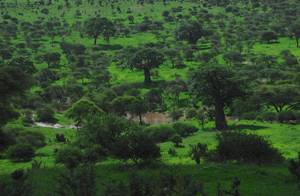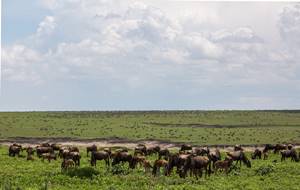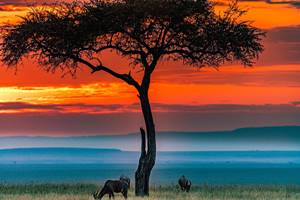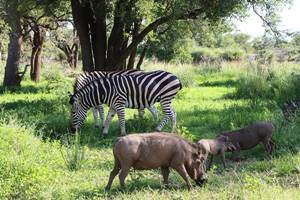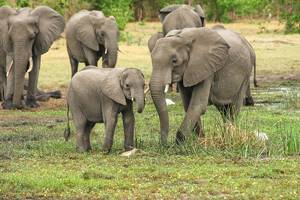Nestled in the heart of Tanzania, Serengeti National Park stands as a true testament to the untamed beauty of Africa. Spanning over 14,750 square kilometers, this iconic wilderness is renowned worldwide for its incredible biodiversity and breathtaking landscapes. The park’s name itself, derived from the Maasai language meaning “endless plains,” perfectly encapsulates its vastness and diversity.

Serengeti National Park is home to an array of fascinating wildlife, including the famous Big Five – lions, elephants, rhinos, leopards, and buffalos – along with countless other species that roam freely across its grasslands and woodlands.
Biodiversity And Wildlife Of Serengeti National Park
Serengeti National Park is renowned for its exceptional biodiversity and remarkable wildlife. Spanning over 14,750 square kilometers in Tanzania, this vast savannah ecosystem is home to a diverse array of species. The park’s most iconic inhabitants include the “Big Five” – lions, elephants, leopards, buffalos, and rhinoceroses – which attract numerous visitors each year.
Additionally, the Serengeti hosts the world’s largest terrestrial mammal migration, with millions of wildebeest and zebras journeying across its plains in search of fresh grazing grounds.
This spectacle also serves as a feeding frenzy for predators like cheetahs and hyenas. Furthermore, the park supports over 500 bird species including ostriches and secretary birds.
The Great Migration: A Spectacle In Serengeti National Park
Every year, in the vast plains of Serengeti National Park, a remarkable natural phenomenon unfolds—the Great Migration. This awe-inspiring event sees over two million wildebeest, zebras, and gazelles traverse the park’s expansive grasslands in search of greener pastures.
Spanning approximately 800 kilometers, this epic journey is driven by the seasonal rains and the need for fresh grazing lands. Witnessing the Great Migration is a breathtaking spectacle that captivates visitors from around the world.
The thunderous sound of hooves and the dust clouds created by these massive herds are unforgettable sights to behold.
Conservation Efforts And Challenges In Serengeti National Park
Serengeti National Park, a UNESCO World Heritage Site, boasts remarkable conservation efforts to protect its diverse wildlife and delicate ecosystems. The park’s management collaborates with local communities, government agencies, and international organizations to implement various initiatives. These include anti-poaching patrols, community-based conservation projects, and habitat restoration programs.
Furthermore, Serengeti’s successful partnership with the Maasai people has led to the establishment of wildlife management areas that promote sustainable land use practices.
However, numerous challenges persist. Poaching remains a significant threat to iconic species like elephants and rhinos due to the illegal wildlife trade. Encroachment by human settlements also poses risks as it leads to habitat fragmentation and conflicts between humans and wildlife.
